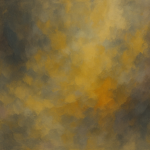Postpartum hemorrhage (PPH) remains one of the most common causes of maternal death globally. In many cases, it’s not a matter of lacking knowledge—it’s about lacking access to the tools we need.
In well-resourced U.S. hospitals, the JADA® System has in many ways been a paradigm change by using vacuum-induced uterine tamponade—a technique that creates gentle intrauterine suction to trigger uterine contraction and bleeding control. However, for the vast majority of obstetric providers around the world, JADA is not an option. It’s expensive, requires cervical dilation, and is only FDA-approved for use in the immediate postpartum setting.
So, what do you do when you don’t have the ideal device—or the luxury of time?
Two game-changing techniques every obstetric provider should know
In recent years, two low-cost, practical alternatives to JADA have emerged that may help save lives in low-resource settings:
FOCUS (Foley catheter for uterine suction)
FOCUS uses a common urinary Foley catheter inserted into the uterus and connected to a vacuum source. By inflating the balloon (per manufacturer instructions) and applying continuous suction (80–525 mmHg), the uterus collapses inward, mimicking the mechanism of JADA.
- Can be used at any gestational age
- No need for cervical dilation
- Costs under $2
- Foleys are already present in most postpartum hemorrhage kits worldwide
- Ideal for medical missions, rural hospitals, and low-resource settings
STUT (suction tube uterine tamponade)
Developed and tested in South Africa and Latin America, STUT uses a simple gastric suction tube inserted into the uterus and attached to wall suction. In a multicenter randomized clinical feasibility trial (Singata-Madliki et al., IJGO, 2025), it was more effective than balloon tamponade—with less pain.
Why this matters
These techniques aren’t just theoretical. They’ve been used to prevent hysterectomies and manage PPH in high-acuity settings.
As obstetricians, we’re often trained in protocols and devices that aren’t accessible everywhere. But FOCUS and STUT use tools already stocked in nearly every labor unit on earth. They are reproducible, effective, and can be taught in minutes.
Frank I. Jackson is a maternal-fetal medicine fellow.


















![New data reveals the massive pay gap for women ER doctors [PODCAST]](https://kevinmd.com/wp-content/uploads/Design-4-190x100.jpg)



